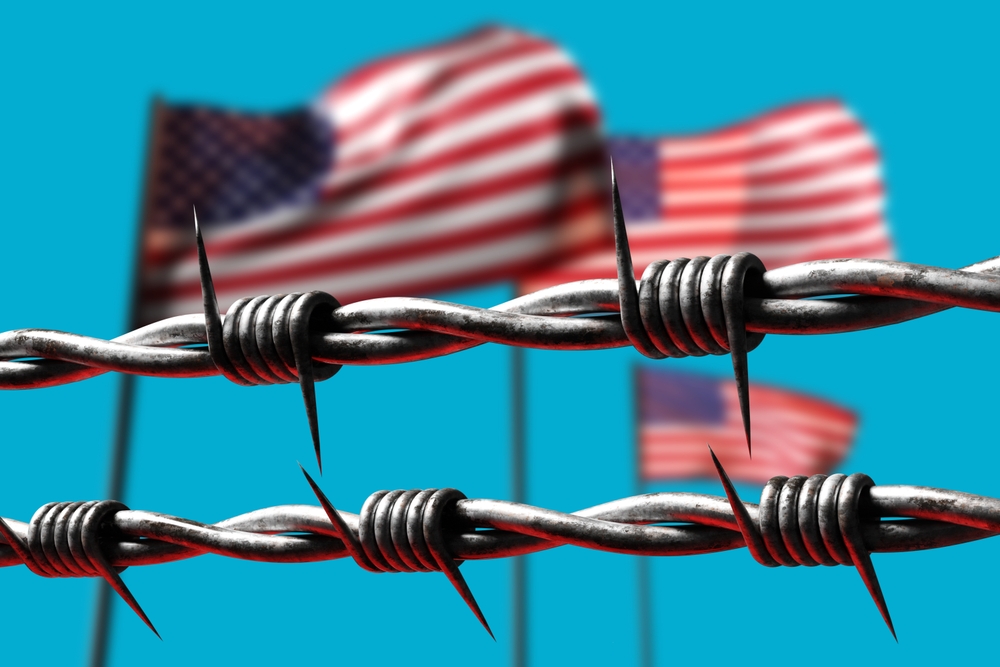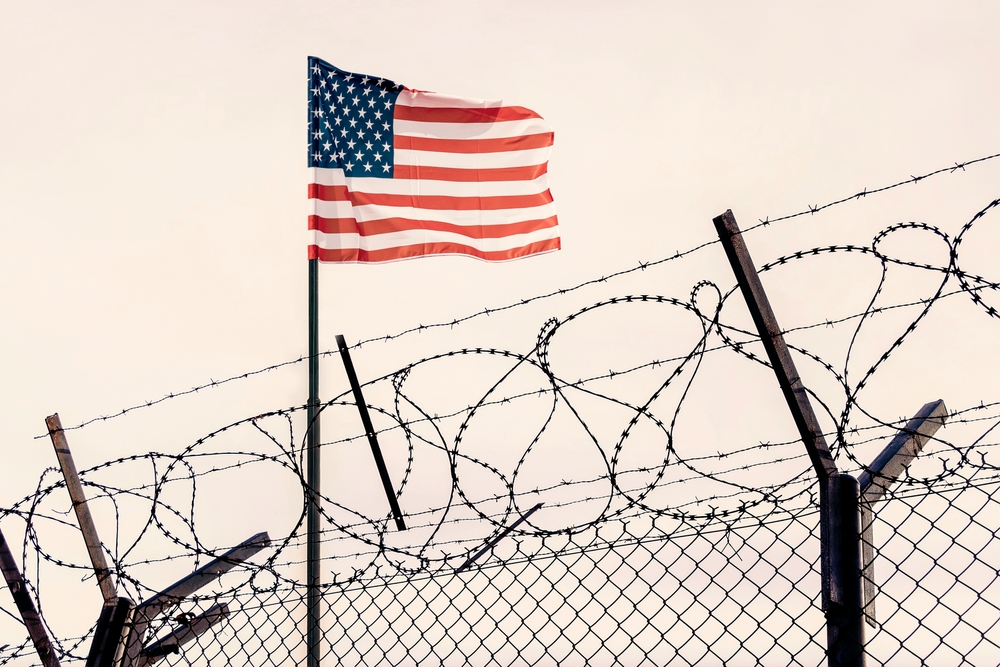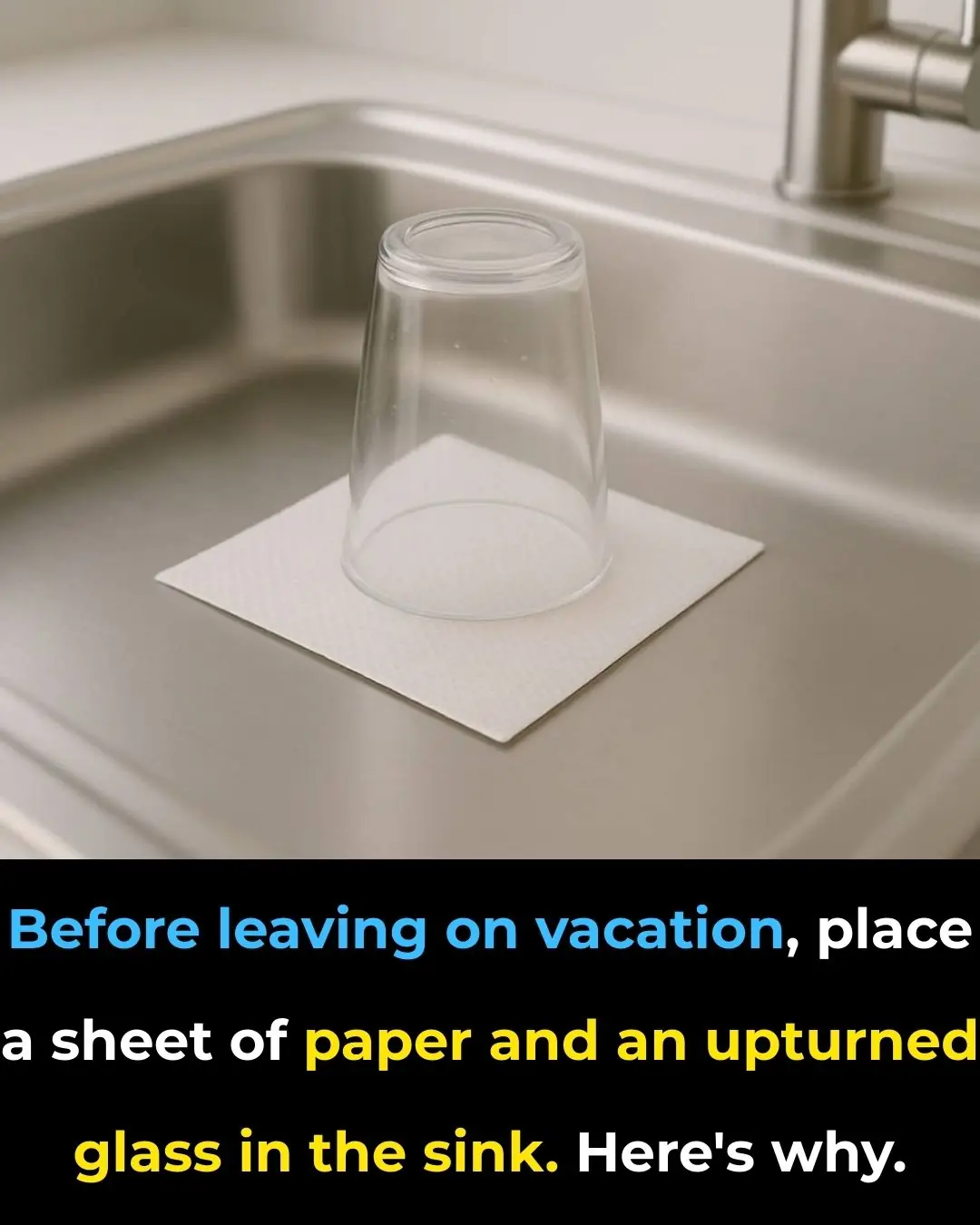
Disturbing Reason Donald Trump ‘Specifically Requested’ to Have the Mexican Border Painted Black

Trump’s Black Border Wall: Policy, Physics, and Political Theater
A fresh coat of paint might seem like the simplest of upgrades—something you’d do to brighten a house or freshen a fence. But at the U.S.–Mexico border, a new paint job has taken on the weight of national policy. President Donald Trump has ordered the massive steel border wall to be painted black, framing the decision not as cosmetic but as tactical.
The reasoning is rooted in physics: in the brutal desert heat, black steel absorbs more sunlight, becoming scorching to the touch. In theory, this would make the wall more difficult—if not dangerous—to climb, acting as a deterrent to migrants attempting to cross into the United States.
Yet what seems like a straightforward tweak has reignited debate around one of the most polarizing symbols of Trump’s presidency. Supporters hail the move as an innovative, low-cost enhancement to border security. Critics, however, deride it as political theater—an expensive gesture unlikely to change the complex realities driving migration.
The Science Behind the Heat
Trump’s proposal leans on a basic scientific principle: darker surfaces absorb more heat than lighter ones. Along the southern border, where summer temperatures regularly exceed 100 degrees Fahrenheit, black-painted steel could reach dangerous levels of heat. Officials argue this would make climbing nearly impossible during the day, reducing the number of successful crossings.
However, experts are deeply skeptical. Migrants often cross during cooler nighttime hours when temperatures plummet, rendering the heat effect irrelevant. Others can use gloves, cloth, or even pieces of clothing as makeshift protection, bypassing the danger of burned hands. Border security agents also note that ladders, ropes, and other tools remain common, reducing any deterrent effect the paint might have.
A secondary claim—paint as a protective layer to reduce rust and extend the wall’s lifespan—has some merit, but history raises questions. When segments of the wall were painted black during Trump’s first term in 2019, the coating began peeling within 18 months. By early 2022, large sections showed significant wear, undermining the promised durability.
An Old Idea Recycled

The concept of painting the border wall black isn’t new. During his first term, Trump repeatedly floated the idea and tested black-coated sections along the Arizona border. Those early experiments failed to show meaningful results. The paint degraded quickly, and there was no measurable impact on migration patterns.
Now, in his second term, the idea has returned with greater force and far more funding. The Trump-backed “Big, Beautiful Bill,” passed by Congress in July, allocates roughly $46 billion to border security. The bill covers wall expansion, surveillance upgrades, and maintenance—including the controversial paint job.
This revival underscores how the wall remains not just a physical barrier but a powerful political symbol. When construction halted in 2021 after Trump left office, millions of dollars’ worth of unused steel stood rusting in the desert. Resuming the project—this time with a glossy black finish—signals an effort to complete unfinished business while reinforcing the administration’s hardline stance on immigration.
Criticism, Skepticism, and Public Reaction

The announcement of the paint initiative drew swift backlash. Critics questioned not only the plan’s effectiveness but also its staggering cost. Earlier estimates placed the price of painting the full 1,300-mile stretch of the wall at nearly $2.7 billion—money that opponents argue could be better spent on immigration courts, legal pathways, or technology that actually improves enforcement.
Social media erupted with derision, branding the project “cosmetic theater.” Memes compared the strategy to cartoonish schemes from Wile E. Coyote, while others criticized the optics of prioritizing paint over pressing humanitarian concerns. Some lawmakers openly called the proposal “a headline stunt” designed to energize Trump’s political base rather than deliver substantive change.
Even within government agencies, unease persists. Border Patrol officials have acknowledged, sometimes privately, that the push for black paint is driven less by tactical necessity than by the president’s desire for a bold, visible statement.
A Broader Immigration Strategy
Seen in context, the decision to paint the wall black is just one piece of a sweeping, hardline immigration strategy. During his first term, Trump made the wall a physical embodiment of his “tough on immigration” platform, even as significant stretches of the border remained unfortified.
In his second term, the approach has broadened. Enforcement has intensified within the United States, with expanded ICE raids, accelerated deportations, and the establishment of “National Defense Areas” along 230 miles of the border in New Mexico and Texas. The $46 billion border bill funds not just paint and steel but also advanced sensors, drone surveillance, and water barriers in the Rio Grande.
For Trump and his allies, these steps are about more than deterrence. They are about symbolism: projecting strength, asserting sovereignty, and reassuring supporters that the administration is delivering on promises of control.
The Politics of Optics
Ultimately, the “black wall” highlights the dual nature of Trump’s immigration agenda: policy intertwined with performance. On paper, the paint job draws from simple physics to bolster deterrence. In practice, experts see a measure with limited operational impact but significant political payoff.
Whether the paint peels again in 18 months, as it did before, may matter less than the image it conveys—a wall that appears more imposing, more unyielding, and more permanent. It’s a reminder that in modern American politics, immigration policy often hinges as much on optics as on outcomes.
News in the same category


A Company in Kenya Builds Houses From Recycled Shipping Containers – Solar-Powered and Ready in Days

What Terrible Things Happen When Women Lack Intimacy? A Painful Yet True Reality

Why You Should Never Place Your Bed Like This

Sink Trick You Should Always Do Before Vacation

Elon Musk Issues Serious Warning on Japan’s Population Decline

What it says about your relationship when your partner sleeps with their back to you

Orlando Bloom explains ‘horrible’ side effects his weight-loss transformation caused

A:dult star reveals the clause written into her contract that helps keep her safe

Bear Attack Survivor’s Haunting Farewell Note to Wife After Gathering Pieces of His Own Flesh

Ring Finger Longer Than An Index Finger

The Hidden Meaning Behind Thumb Rings for Women vs. Men

North Face Co-Founder Bought 2.2m Acres Just to Protect It

Family gives update on baby after brain dead woman was kept alive to give birth due to abortion law

The hidden meaning of thumb rings: what they represent for women vs. men

What it says about your relationship when your partner sleeps with their back to you

The World’s Strongest Animal Isn’t an Elephant or Bear

Gordon Ramsay issues health warning after undergoing cancer surgery

Delta Pilot Spends Year’s Salary to Fly 112 Friends to Hawaii for Epic Retirement Sendoff

Unbelievable footage shows moment Ukraine blows up two key Russian bridges using their own mines amid WW3 fears
News Post

🌿 Can Papaya Leaves Turn Gray Hair Black Naturally? Unlock Nature’s Secret to Vibrant Hair

Japanese airport has never lost luggage in over 30 years – This is why

The Ultimate DIY Clove Skincare Routine

A Company in Kenya Builds Houses From Recycled Shipping Containers – Solar-Powered and Ready in Days

5 Types of Drinks You Shouldn’t Store in a Thermos

Smart Tips for Boiling Eggs: Prevent Cracks, Easy to Peel, and How to Time Them Perfectly

🥕 3-Day Carrot-Based Detox: Cleanse Your Liver and Intestines Naturally

Coconut Oil for Hair Growth – Add this in your Hair Oil

What Terrible Things Happen When Women Lack Intimacy? A Painful Yet True Reality

Why You Should Never Place Your Bed Like This

Sink Trick You Should Always Do Before Vacation

10+ Foods That Naturally Lower Blood Sugar Levels

Elon Musk Issues Serious Warning on Japan’s Population Decline

A Fruit Growing Abundantly in Gardens That Few People Eat Turns Out to Be an Autumn ‘Miracle’ Better Than Ginseng and Bird’s Nest

Why Should You Drop a Clove of Garlic into the Toilet Bowl at Night? Knowing Its Benefits, Every Household Wants to Try It

Revealed: How to Make Ceramic Tiles Sparkle at Home – Without Spending a Dime

If your private parts smell fishy, it’s something you should be aware of

Soak the vermicelli in a bowl of fish sauce, after 2 minutes you will know if the vermicelli is clean or contains borax.

The refrigerator seal has black mold, use this to wipe it, and it will be completely clean in just 5 minutes.
